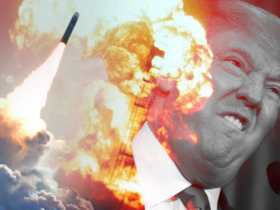On August 15, 1971, US President Richard Nixon gave a television speech in which he announced the cancellation of direct international conversion from the dollar to gold.
This move effectively led to the collapse of the Bretton Woods international monetary system established after World War II, under which the US dollar was convertible into gold at a rate of $35 per ounce.
Under the move approved by Nixon, other major currencies were linked to fixed rates against the dollar, paving the way for the adoption of the current system of floating exchange rates.
As inflationary pressures developed, Washington needed other mechanisms to maintain dollar strength. In 1974, then US Secretary of State Henry Kissinger visited Saudi Arabia. During the visit, the two countries signed agreements in which Washington would accept the sale of high-tech weapons to Saudi Arabia. In return, Riyadh agreed to invest surplus cash in US Treasury bonds.
Mutual profits
The agreement was as profitable for the United States as it was for the Kingdom. The Saudi economy in that period, like the economies of other Gulf countries, did not enjoy current development. Spending surplus oil exports in their domestic economies was almost impossible, and they really needed a place to “recycle petrodollars.”
It has become possible for the Kingdom to sell oil to major importers such as the United States, Japan, and others in exchange for a stable currency such as the US dollar, and then use the revenues in international markets to purchase goods and services or reinvest them in US Treasury markets.
This bilateral understanding prevailed for decades, but there was in no way a binding contract for Riyadh to sell its oil in dollars. Rather, it was a logical solution that the Kingdom chose to implement when it saw it as beneficial to its interests.
This optional status left its mark on the commercial balance. Oil-exporting countries to the United States, led by Saudi Arabia, reinvested their profits in American companies and government bonds, which strengthened the connectivity of global financial markets and ensured the flow of capital towards the United States. Ultimately, this system made the dollar the primary reserve currency.
A widespread rumor
Over the past few days, several news platforms have promoted things that are not true. These platforms promoted the existence of an agreement between the United States and Saudi Arabia obligating the latter to settle all oil transactions between the two parties in US dollars. It was also rumored that Saudi Arabia decided overnight not to renew this 50-year-old agreement, ending what is called the “petrodollar era.”
The urgent question now is: How were these rumors born and how can they be viewed considering the contexts and circumstances in which they appeared.
This fake news story was born in a context in which some aspects contained parts of the truth.
The understandings and agreements that Kissinger signed during his aforementioned visit framed the relationship between the two countries and moved it to the level of high alliances that include all political, military, and economic fields. In the 1980s, the Kingdom owned 30% of US Treasury debt. Over time, the dollar has succeeded over the past decades in continuing to be the dominant currency in oil trade, creating the “petrodollar” system in which everyone uses the American currency. This model remained suitable for most oil-producing countries as long as the dollar was an appropriate currency for recycling their financial surpluses into investments abroad.
But this did not mean in any way that Saudi Arabia and other Gulf states did not have the right to formulate any new understandings regarding the sale of oil in dollars or other currencies with the United States and others.
What apparently sparked the rumor is that in early June, the kingdom had already joined the mBridge project, a multi-central bank digital currency (CBDC) common platform for wholesale cross-border payments and settlement. The project includes the central banks of China, Hong Kong, Thailand and the UAE. The rumor was initially because mBridge does not plan to support payments in dollars at this time.
An era is on its way out
The reality, however, is that the era of the petrodollar is on its way out. The issue is not due to a single Saudi decision as much as the will of major players such as China, which has become the first trading partner for about 140 countries, an issue that allows it to impose its dominance over global trade.
For example, if China decides not to buy Saudi oil except in yuan, Saudi Arabia will have no choice but to comply, as China is the biggest buyer of oil, as it is the world’s factory. If Riyadh refuses to comply, Beijing could decide not to buy Saudi oil, and instead rely on the oil of other countries such as Russia, Venezuela, Iran, and Iraq. Then Saudi oil will not find an important market to replace China, while the United States does not buy its oil.
Accordingly, China can deal a fatal blow to the dollar if it announces that the yuan will be its currency in all its foreign trade, but it cannot knock the dollar down, for fear of a global economic shock that will harm many parties, and the world may turn into a state of chaos and collapse.
Stimulating conditions
However, there are other circumstances that motivate Saudi Arabia to shift slightly away from selling its oil in dollars. In a geopolitically turbulent world that needs more hedging, the Kingdom is trying to do some sensible risk management and limited diversification of the currencies it accepts in exchange for selling oil.
According to a Saudi source, the US dollar may not be the ideal alternative, but creating a trustworthy alternative will take decades, and it will not be easy or smooth.
“If the Kingdom sells all its oil in Chinese yuan, Japanese yen or other currencies, where will it reinvest its surplus?”, he said.
“Does Riyadh invest in government bonds in China, a country that lacks the rule of law, or in Japanese government bonds while the Bank of Japan owns 60% of the market? Can it invest heavily in bonds of emerging market such as Turkey and Egypt in light of concerns related to political and economic stability in the two countries?”, the source asked.
The source explained that relations between Washington and Riyadh remain strategic, although some of its details change according to the change in the occupant of the White House
According to the source, the Kingdom is trying hard and to a calculated extent to reach rapprochement with China, but selling Saudi oil in Chinese currency can only be read as a maneuver in the context of the current negotiations between Washington and Riyadh regarding arms deals.
Side effect
The current increasing pressure to use alternative currencies to the dollar in trading oil is merely a side effect of the Russian invasion of Ukraine.
Following the Russian invasion of Ukraine, Moscow priced a large portion of its oil sales to China in yuan, a move that aligned with Beijing’s ambitions and strategies to internationalize the yuan. Over the past five years, the yuan’s share of international payments has doubled from 2.15% to about 4.5%.
In Beijing’s view, an enlarged BRICS organization represents one useful tool in achieving further successes of that strategy. One of the current goals of BRICS is to use more local currency transactions and avoid the dollar.
While China views the accession of the Kingdom, the largest oil exporting country, to the organization, as serving those goals, the latter sees it as merely a bargaining card in negotiations over a historic bilateral defense agreement between Riyadh and Washington.

















Leave a Reply